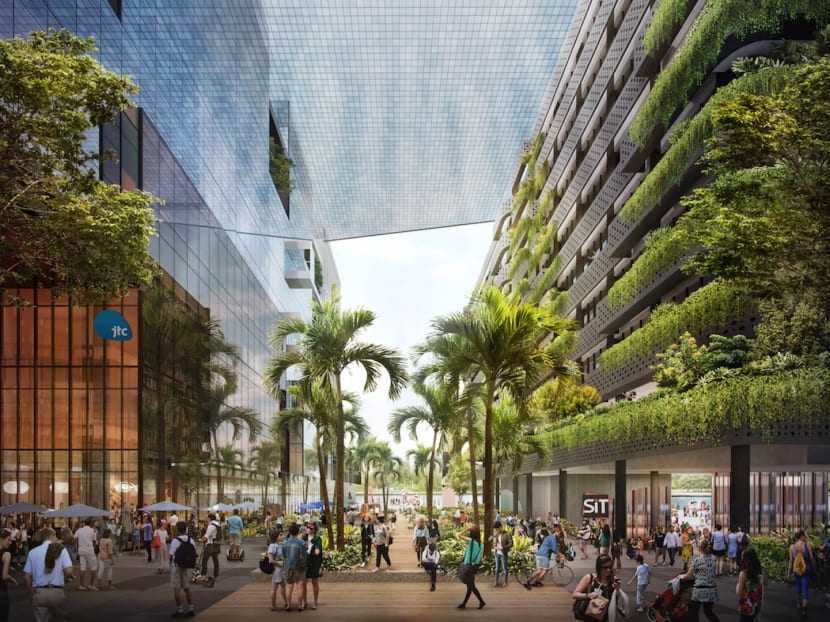‘Urgent’ need for SIT to move to new campus amid space crunch, says university president
SINGAPORE — The year 2023 cannot come fast enough for Professor Tan Thiam Soon, president of the Singapore Institute of Technology (SIT).

An artist's impression of the campus boulevard at the SIT's new campus in Punggol, slated to finish by end-2022. Photo: JTC
SINGAPORE — The year 2023 cannot come fast enough for Professor Tan Thiam Soon, president of the Singapore Institute of Technology (SIT).
That is when SIT, Singapore’s fifth autonomous university, hopes to finally move into its new Punggol North campus, which will be able to host a student population of about 12,000.
“There’s very good reason for that urgency. SIT is still a rapidly growing university. By this year’s admission, we’d have exceeded 7,000 students … we do have to deal with a space crunch,” Prof Tan told reporters at a press briefing last week on the masterplan for the new Punggol Digital District.
The new SIT campus will sit alongside a business park in the district, the first in Singapore to do so. Construction of the new campus is slated to finish by end-2022, while a range of new features in the district will progressively be ready from 2023.
The university currently operates out of a main campus in Dover and five satellite campuses in the Ngee Ann, Nanyang, Republic, Singapore and Temasek polytechnics, which can hold up to 8,000 students in total. An SIT spokesperson said its yearly intake will rise to 3,500 by 2023, up from 2,600 last year.
SIT started in 2009 with a pioneering batch of 500 students in 10 degree programmes. For the 2018/2019 academic year, it will offer 43 degree programmes, including the first degree in aircraft systems engineering offered by an autonomous university here.
The university is exploring several interim solutions to ease the space crunch caused by its fast-growing student population.
Apart from putting up temporary learning spaces at its Dover campus, it is exploring the possibility of tapping into some of the polytechnics’ facilities. It is also looking into how classes are scheduled to try to optimise its existing facilities.
“There’s a possibility students may have to stay back a little bit later, and class hours are extended a bit longer,” said Prof Tan.
Saying the university is not considering a seventh campus for now, Prof Tan quipped: “Believe me, running six campuses is already a big headache. Running seven campuses will be worse.”








